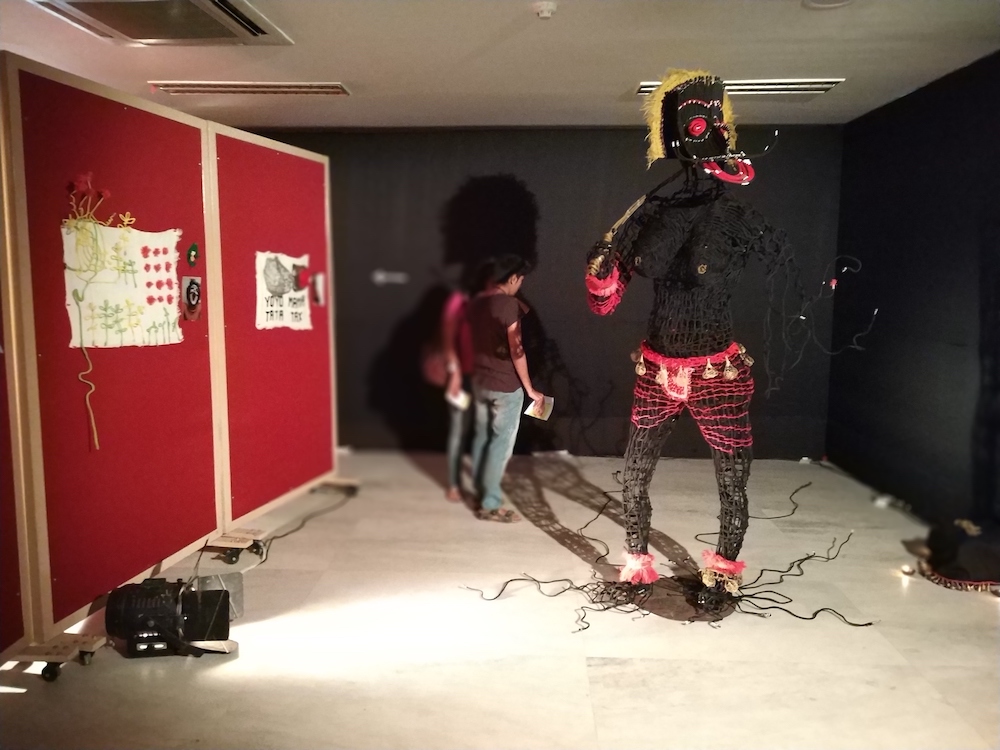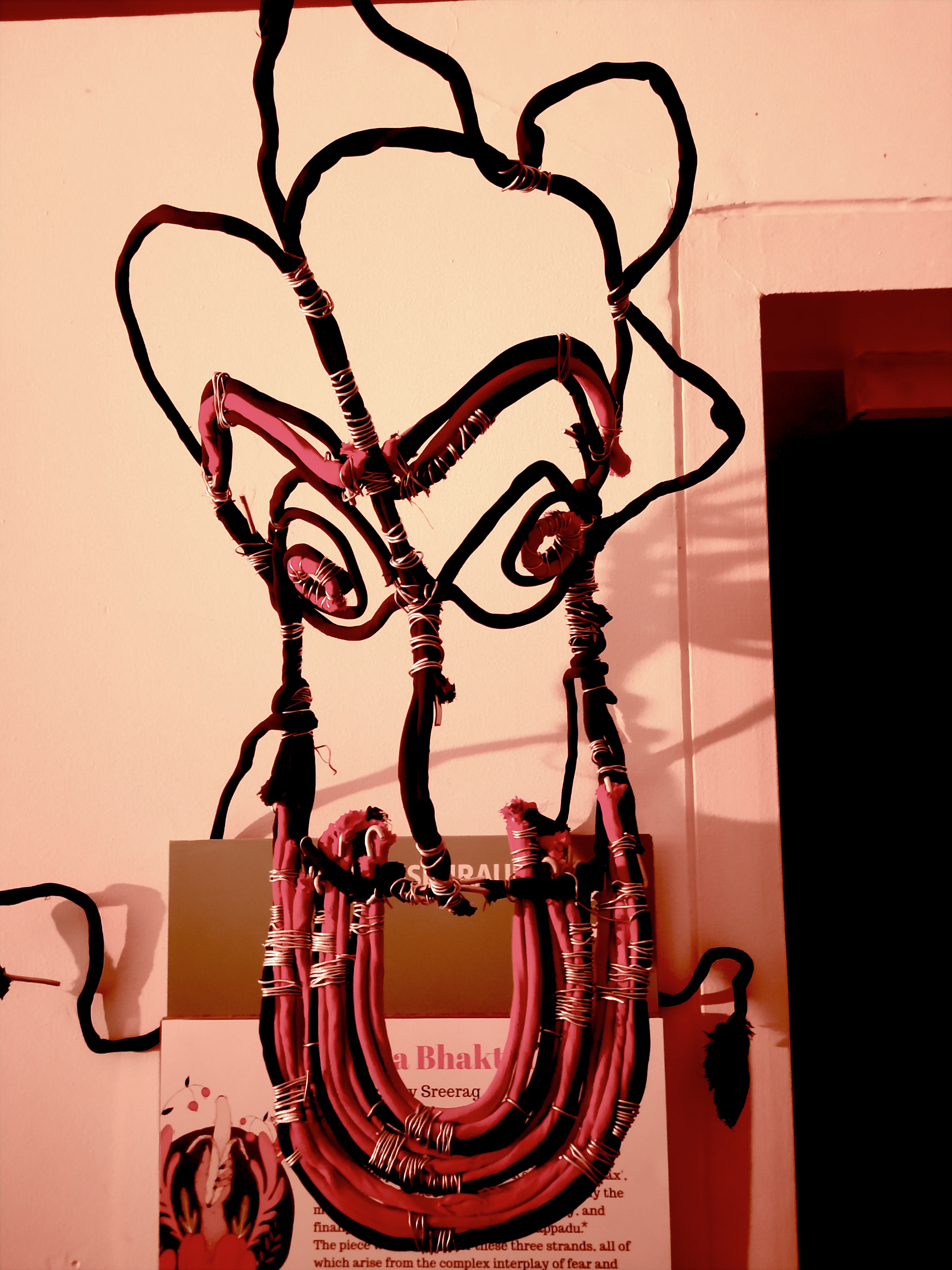Bhaya Bhakti: An installation and graphic novella with three focal points: the story of Nangeli, the folk performance of Poothapaatu, and the ritual possession of Velichappadu.

Created for Gender Benger 2018 by Pranav Sreerag, produced by Sandbox Collective and Goethe-Institut/Max Mueller Bhavan Bangalore
Many people have heard the story of Nangeli – the 19th century Ezhava woman who cut off her breasts and bled to death, rather than comply with the breast tax imposed by the landowning castes under the Travancore government.
The story of Nangeli is often portrayed as one woman’s heroic struggle against a patriarchial casteist system. While this reading is not wrong, it shifts the emphasis from Nangeli’s shared struggle to a singular dramatic act that seems to stands apart from the forces of oppression that persist today.
We would like to reposition the story as part of the struggle of a people against an opressive feudal power that uses women’s bodies as a tool to subjugate an entire farming community and maintain its parasitic hold. Like so many other singular heroic figures, there is evidence that Nangeli and her husband Chirukandan (who jumped into her funeral pyre to take his own life) did not impulsively decide to become martyrs, but had long been active in a struggle for the rights and dignity of their community.

Bhaya Bhakti envisions both Nangeli and Chirukandan returning to this world in the genderless, casteless, not-quite human yet deeply human figure of the Pootham, bewildered and enraged by what it witnesses. The ghostly Pootham is the central figure in the traditional folk performance art of Poothapaattu. Bhaya Bhakti attempts to juxtapose the violent and shocking scene of Nangeli’s popular depiction with a representation of the unending effort of lower castes to improve their lot against the backdrop of Hindutva. The Pootham becomes the god of the people, spurned and cast away, knocking endlessly on door after door, village after village, in search of opportunity that has been denied. The Pootham is humiliation made manifest: the slow grinding down and ‘othering’ of a people that justifies their exploitation.

Finally, Bhaya Bhakti envisions a future uprising of the oppressed in an eruption of rage and fury. Through sound and smell, the installation channels the terrifying power of Velichappadu, in which men and women, undergoing ritual possession, come into contact with something beyond human, without gender or caste, without identity as we know it, and in the process inflict violent harm to their own bodies. Only in the resulting disruption of the viewer’s present relatity can we see our identities for what they are.